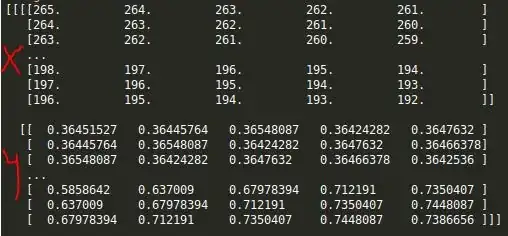I am trying to train my model using LTSM layer in Keras (python). I have some problems regarding the data representation and feeding it into the model.
My data is 184 XY coodinates encoded as a numpy array with two dimensions: one corresponding to the X or Y and second is every single point of X or Y. Shape of a single spectrum is (2, 70). Altogether, my data has a dimension of (184, 2, 70).
The label set is an array of 8 elements which describes the percentage distribution of some 8 features which are describing XY. The shape of an output is (184, 8).
My question is how can I train using the time series for each XY pair and compare it to the corresponding label set? Different XY data show similar features to each other that is why it is important to use all 184 sample for the training. What would be the best approach to handle this problem? Below I show the schematics of my data and model:
Input: (184, 2, 70) (number of XY, X / Y, points)
Output: (184, 8) (number of XY, predictions)
I look forward for some ideas!
